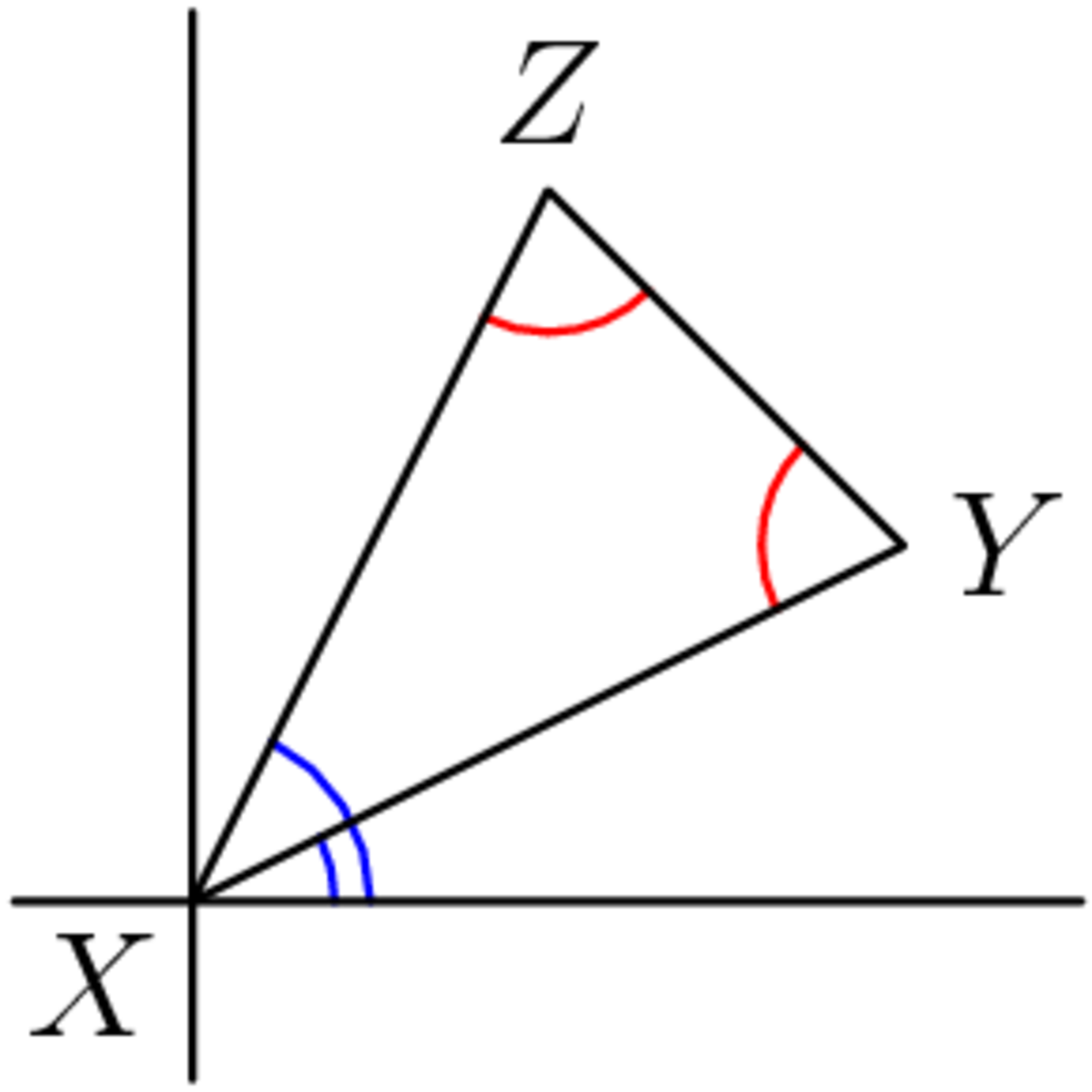Triangle Area and Slopes
If x is the length of one side of a triangle with a slope of zero, m 1 and m 2 are the slopes of the other two sides, and A is the area of the triangle, then these four variables are related by the equation x P = Q ⋅ A ( m 1 R − m 2 S ) , where P , Q , R , and S are non-zero integers.
Find ∣ P ∣ + ∣ Q ∣ + ∣ R ∣ + ∣ S ∣ .
The answer is 6.
This section requires Javascript.
You are seeing this because something didn't load right. We suggest you, (a) try
refreshing the page, (b) enabling javascript if it is disabled on your browser and,
finally, (c)
loading the
non-javascript version of this page
. We're sorry about the hassle.
1 solution
The tricky step was finally realizing that
m 1 m 2 m 1 + m 2 = m 1 − 1 + m 2 − 1
when once the area has been worked out first in this way
A = 2 ( m 1 + m 2 ) m 1 m 2 x 2
In general, it is not true that m 1 = tan Z and m 2 = tan Y .
Log in to reply
"Through trigonometry, the slope m of a line is related to its angle of incline θ by the tangent function m = tan ( θ ) ." (See here .)
Log in to reply
The problem is, in your solution, Y and Z are angles of the triangle (shown in red below).
The formula m = tan θ only works when θ is the angle the line makes with a horizontal line (shown in blue below). These are different angles.

Log in to reply
@Jon Haussmann – You are right! I edited my problem to restrict side x to have a horizontal slope.
The area of △ X Y Z (with sides x , y , and z , with x along the x-axis and Z at the origin) is A = 2 1 x y sin Z .
By law of sines, sin Y y = sin X x , so y = sin X x sin Y , which means A = 2 sin X x 2 sin Y sin Z .
By the angle sum of a triangle, X = 1 8 0 ° − ( Y + Z ) , so sin X = sin ( 1 8 0 ° − ( Y + Z ) ) = sin ( Y + Z ) . Therefore, A = 2 sin ( Y + Z ) x 2 sin Y sin Z .
Using the sine addition identity, A = 2 ( sin Y cos Z + sin Z cos Y ) x 2 sin Y sin Z .
Rearranging, x 2 = 2 A ( sin Z cos Z + sin Y cos Y ) or x 2 = 2 A ( tan Z 1 + tan Y 1 ) .
Since m 1 = tan Z and m 2 = tan ( 1 8 0 ° − Y ) = − tan Y , x 2 = 2 A ( m 1 1 − m 2 1 ) or x 2 = 2 A ( m 1 − 1 − m 2 − 1 ) .
This means P = 2 , Q = 2 , R = − 1 , and S = − 1 , and ∣ P ∣ + ∣ Q ∣ + ∣ R ∣ + ∣ S ∣ = ∣ 2 ∣ + ∣ 2 ∣ + ∣ − 1 ∣ + ∣ − 1 ∣ = 6 .